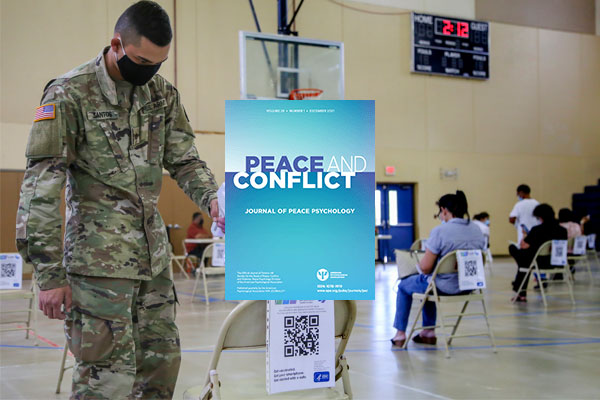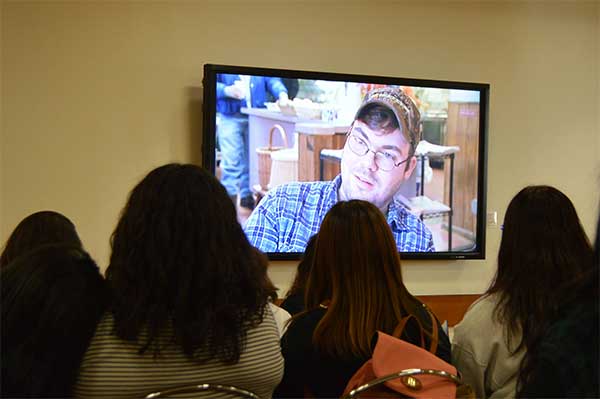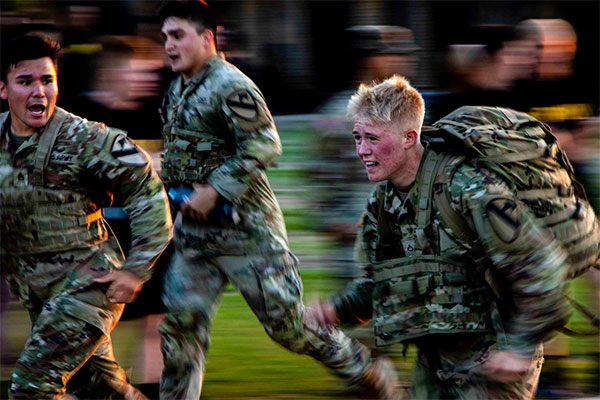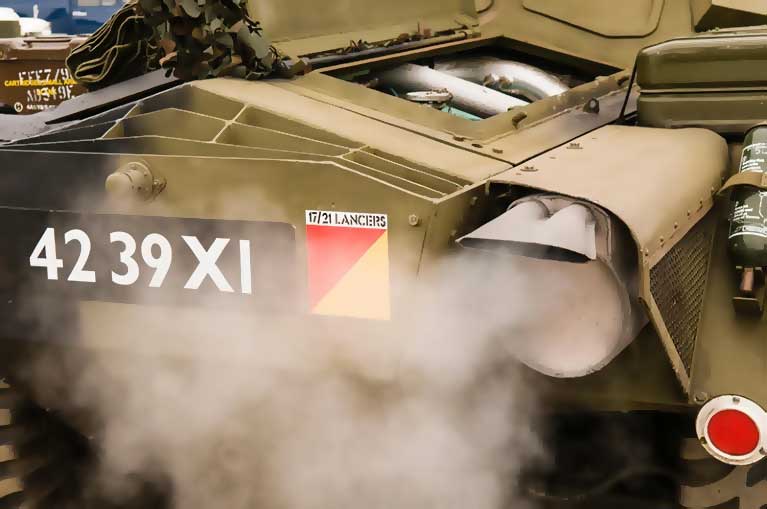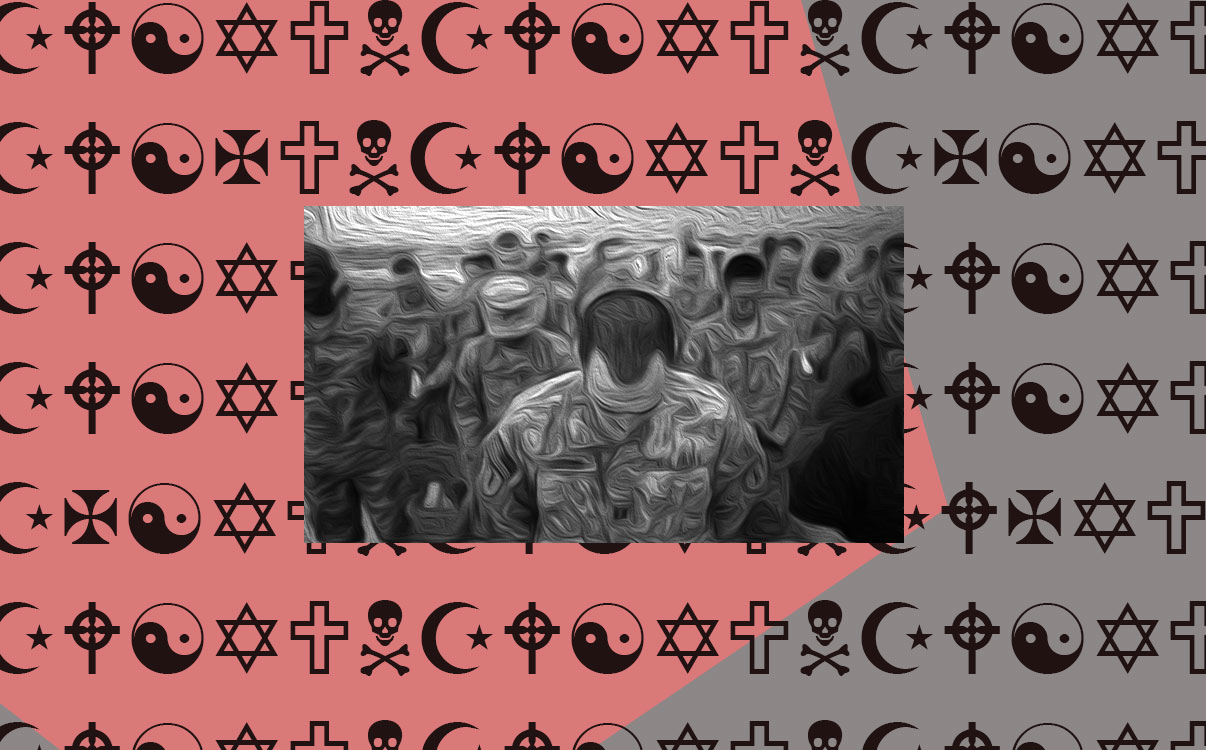"You are part of the national network of peace groups working to stop the militarization of schools and young people! "
1065: NNOMY News Fourth Quarter 2022 -
The Wages of U.S. Militarism Upon Us
|
|
|
|---|
|
Hello Visitor,
For the last NNOMY newsletter of 2022 we present the dichotomies that counter-recruitment activism finds itself in during a still looming and uncertain pandemic culture where our lives and the state of our schools and youth are disrupted. The military’s recruitment efforts likewise find themselves in a dilemma with sagging recruitment numbers and youth not qualifying to meet the standards to be accepted into military service. On the flip side, there appears to be a generational shift going on with GenZ more aware of the pitfalls of military service and concerned about existential issues like climate change and beginning to connect the dots between our resource dependent economies and the devastation extracting them are exacting on our planet’s life forms and natural environments. This concern is not universal however, but between non-compliance with recruitment standards for some and a critical eye towards US wars and conflicts around the world from others, NNOMY is seeing a resurgence of articles questioning the narratives of militarists and nationalism. How this leaves youth demilitarization activism in the lurch is also evident with groups having had a now nearly three year absence from school access and groups either aging out after a nearly thirty year run of counter-recruitment activism and an uncertain generational disconnect with a digitized generation now the object of military recruitment efforts. An upside to NNOMY going into 2023 is the possibility of a potential wave of counter-reaction by young students to conservative attempts to reign in progressive influences in their communities and lives. One of the question in front of us all as we head into the next year is whether the potential for counter-militarism in our culture is a universal instinct across the country and world as youth increasingly are asking for relief from the inconsistencies in the culture between the rhetoric of governments and the circumstances they face in their present lives as they look towards an uncertain future.
#counter-recruitment | #nnomypeace | #peacefulcareers | #demilitarize | www.nnomy.org
|
|
|---|
|
|
|
The “Groundhog Day” Syndrome and Progressive Movements in the U.S.
November 8 2022 / Rick Jahnkow / Draft NOtices, October-December 2022 - In 2003, I wrote a critique of the U.S. anti-war movement that included a reference to the 1993 movie “Groundhog Day.”For those of you unfamiliar with the film, it’s about a TV reporter, played by Bill Murray, who is sent to cover the traditional observance of a groundhog’s emergence from its burrow on February 2nd. According to legend, if the animal does not immediately return to its den, it will portend an early arrival of spring.
In the film, the journalist wakes up the next day and discovers he is trapped in a time loop that keeps returning him to February 2nd. When he gets up every morning and goes about his business, he encounters the same people starting their day the same way as before. Unlike those around him, he is conscious of the time loop and knows exactly what to expect each day. Despite his awareness of the cycle, he can’t figure out how to stop it, and each morning begins again with Groundhog Day.
The context for my reference to the film in 2003 was the beginning of yet another devastating war launched by the U.S. and its allies. The peace movement, then, was like the Bill Murray character, having witnessed many similar beginnings of U.S. warfare during the previous 50 years, and yet still unable to prevent their repetition.
Today, the Groundhog Day syndrome is as evident as ever and applies in a much broader sense to where we currently find ourselves: experiencing a resurgence of some of the most regressive social attitudes and politics since the 1950s, ones that some of us thought had been banished as a result of the turbulence of the 1960s and 1970s. It’s as though the compelling movements of that earlier time — against racism, poverty, gender inequality, war and environmental destruction — never even happened. And instead, we’re now witnessing a growing national movement, led by an authoritarian ex-president, that seeks a return to the oppressive social order of the 1950s. While it is the case that other rightward swings of the political pendulum have happened periodically in the last 50 years (e.g., the Reagan, Clinton and Bush years), they never reached the extremes we are seeing now. Those who are greatly alarmed by this should engage in critical introspection about why these regressive cycles keep happening and figure out what can be done to prevent them.
|
|
|
|---|
|
|
Of Note | Counter-recruitment: The grassroots struggle to demilitarize U.S. schools
2017 / Lawrence, J. W. / American Psychological Association - Review of the book Counter-Recruitment and the campaign to demilitarize public schools, by S. Harding & S. Kershner, Eds.]. Peace and Conflict: Journal of Peace Psychology, 23(2), 196–198. https://doi.org/10.1037/pac0000244
Reviews the book, Counter-Recruitment and the Campaign to Demilitarize Public Schools edited by Scott Harding and Seth Kershner (2015). In this book, Harding and Kershner tell the stories of how activists with few resources other than dedicated moral passion challenge the military recruitment of adolescents and the militarization of schools and through persistence and effective coalition building achieve some victories both small and large. In conducting their research Harding and Kershner interviewed 70 counter-recruiter (CR) activists from across the United States and much of the book is dedicated to a description of their organizing efforts. They note that in the context of a highly militarized culture steeped in the myth of American exceptionalism, CR activists have found it difficult to organize by criticizing U.S. wars and foreign policy directly. Instead much of the struggle has been framed around demanding that students be treated justly. The primary strategy has been a consumer advocacy method. CR activists are leading a grassroots effort not only to protect children but also to transform United States military culture. Harding and Kershner do an excellent job of telling the story and history of the CR movement. (APA PsycInfo Database Record (c) 2017 APA, all rights reserved)
|
|
|
|---|
|
A Counter-recruitment Conversation with High School Students
.
November 08 2022 / David Morales / Draft NOtices, October-December 2022 - Recently, the Project on Youth and Non-Military Opportunities (YANO) was invited to speak with students at Lincoln High School in San Diego, California. It was among the first of our typical counter-recruitment classroom talks since the disruptions of the COVID-19 pandemic. The invitation came specifically from the Lincoln High chapter of Movimiento Estudiantil Chicanx de Aztlán (MEChA). MEChA is a student organization with roots in the Chicano Movement of the 1960s that seeks to cultivate pride in one’s Chicanx/Latin American culture, promotes higher education, and instills a sense of responsibility to one’s community.
|
|
|
|---|
Writing on War: And Living in a World from Hell
|
Nov 14 2022 / Chris Hedges / The Chris Hedges Report - As this century began, I was writing War Is a Force That Gives Us Meaning, my reflections on two decades as a war correspondent, 15 of them with the New York Times, in Central America, the Middle East, Africa, Bosnia, and Kosovo. I worked in a small, sparsely furnished studio apartment on First Avenue in New York City. The room had a desk, chair, futon, and a couple of bookshelves — not enough to accommodate my extensive library, leaving piles of books stacked against the wall. The single window overlooked a back alley.
The super, who lived in the first-floor apartment, smoked prodigious amounts of weed, leaving the grimy lobby stinking of pot. When he found out I was writing a book, he suggested I chronicle his moment of glory during the six days of clashes known as the Stonewall Riots, triggered by a 1969 police raid on the Stonewall Inn, a gay club in Greenwich Village. He claimed he had thrown a trash can through the front window of a police cruiser.
It was a solitary life, broken by periodic visits to a small antique bookstore in the neighborhood that had a copy of the 1910-1911 Encyclopedia Britannica, the last edition published for scholars. I couldn’t afford it, but the owner generously let me read entries from those 29 volumes written by the likes of Algernon Charles Swinburne, John Muir, T.H. Huxley, and Bertrand Russell. The entry for Catullus, several of whose poems I could recite from memory in Latin, read: “The greatest lyric poet of Rome.” I loved the certainty of that judgment — one that scholars today would not, I suspect, make, much less print.
|
|
|
|---|
|
|
Military Recruiters are Exploiting High School Students’ Financial Insecurities
August 14, 2020 / Sidney Miralao / INEQUALITY.ORG - Schools have become contested territory.
For years, getting police officers out of schools has been a central goal of racial justice campaigns. Recently, they’ve won victories in Denver, Minneapolis, Portland, Charlottesville, and even on many university campuses. However, there’s another group of outsiders in schools we should be wary of: the U.S. military.
Since the end of the draft in 1973, the U.S. has relied on an all-volunteer service to maintain its 1.3 million-member global police force. Over the years the military has used a number of different recruitment methods, but the target audience has always been the same: high schoolers.
The No Child Left Behind Act of 2001 significantly changed how military recruiters reach teenagers. Section 9528 mandates public high schools give military recruiters the same access to students that college recruiters get, including their personal contact information. Schools became gold mines for recruiting “future soldiers.”
Recruiters at my high school in Fairfax County, Virginia always set up shop in the cafeteria. For the next two hours, they would sit through the four different lunch periods and give their spiel to whoever was curious enough to stop at their station.
Recruiters use their omnipresence on campus to build relationships and trust in all kinds of different ways. They may offer to chaperone homecoming events, timekeep at football games, or even give lectures in history or government classrooms.
|
|
|
|---|
|
|
Military Recruiters Should Have No Place in Our Schools
June 27 2022 / Alex Skopic / Current Affairs - Today’s conservatives, to hear them tell it, are deeply concerned with the safety of children in schools. After all, anything from a gender-neutral toilet, which could invite sexual predators, to a Toni Morrison novel, which might cause a reader “discomfort” about their race, could be lurking. One has to be vigilant. So you might assume that if a group of specially-trained adults started hanging around schools, trying to lure minors into dangerous situations under false pretenses, the political Right would be up in arms about it, demanding an influx of police and private security guards to deal with the menace. Unless, of course, these duplicitous strangers are with the military—and then, somehow, the impulse to ‘think of the children’ disappears.
Like salespeople in other industries, recruiters have quotas to meet, and they’re more than willing to use high-pressure tactics to achieve their goals. In particular, they often use education itself as a point of leverage, touting the college tuition assistance the military can provide for its soldiers. It’s a no-win situation, and recruiters take full advantage of the extortionate nature of U.S. college financing. In 2014, Staff Sergeant Jacob Williams—who serves as an encouraging example of a U.S. military officer who operates with a functioning conscience—wrote a confessional article about his time in the Air Force’s Recruiter Assistant Program (RAP), and laid bare the extent of the financial blackmail at work as he made phone calls to potential recruits:
"When they answer “college,” I was supposed to follow up with “how are you going to pay for it?” Obviously I am trying to segue into talking about how the military pays tuition. […] But remember, no excuse not to join the military is ever good enough! There is always a way to keep pushing it, and in this case, it’s … oh wow, more shaming and guilt-tripping. If the prospect says his parents will pay his way through college, I was supposed to make him feel bad for costing his parents so much money. “You don’t really want to make your parents shell out tens of thousands of dollars of their hard-earned money, do you?”
|
|
|
|---|
|
|
Decarbonize the military — mandate emissions reporting
Armed forces have a massive carbon footprint that is absent from global accounting.
November 02 2022 / Various Authors / Nature - The world’s militaries are heavy emitters of greenhouse gases. No one knows exactly how much; estimates range between 1% and 5% of global emissions, comparable with the aviation and shipping industries (2% each). Yet militaries are largely spared from emissions reporting. This must change, or mitigation measures risk becoming mere guesswork1.
For instance, the US military is the world’s largest in terms of expenditure. If they were a nation, US forces would have the highest per-capita emissions in the world, at 42 metric tonnes of carbon dioxide equivalent (CO2eq) per staff member (see ‘Military emissions’). For each 100 nautical miles flown, the US Air Force’s signature F-35 fighter jet emits as much CO2 (2.3 metric tonnes of CO2eq)2 as an average UK petrol car driven for one year. Each year, jet-fuel use by the US military alone generates emissions equivalent to six million US passenger cars2.
|
|
|
|---|
|
|
Concentrations of PFAS in groundwater at Fort Ord are more than 20,000 times over EPA limit
Who knew? Who cares?
November 17, 2022 / Pat Elder / Military Poisons (WILPF) - Army report says eight hangars had suppression systems like these. There was an accidental discharge of foam from the fire suppression system in one hangar which resulted in more than five feet of foam covering the floor of the hangar.
In early November, 2022 the Agency for Toxic Substances and Disease Registry (ATSDR) announced it would be launching a new study to examine why so many veterans stationed at Fort Ord, California have died prematurely and many more have suffered serious illnesses. An ATSDR report in 1996 dismissed the health concerns associated with contamination on the base. Like hundreds of US military installations throughout the country and around the world, Fort Ord, an Army base that was shut down in 1994, is dangerously contaminated with a host of toxins that may continue to threaten public health.
The announcement by the federal agency comes nine months after an impressive investigation by the Associated Press, (AP), that found drinking water at the poisoned outpost contained a host of deadly chemicals, most notably cancer-causing trichloroethylene, (TCE).
|
|
|
|---|
|
Religion and militarism: NNOMY/Compilation
|
2022 / NNOMY - As one might suspect, the issue of cultural militarism and religion has evoked some controversial opinions from voices within differing religious persuasions, that are questioning the ethicacy of declaring ones religious beliefs while supporting militarism and the role that has assumed internationally. The following snippet introductions represent different mainstream religious takes on this dichotomy and links to the full articles. All offer thought provoking discussions on the inherent problems and contradictions that lie between adopting a statist and a religious doctrine into your belief system simultaneously.
|
|
|
|
|---|
Los Angeles High School Peace Clubs Gather for Armistice Day Commemoration
|
11/11/2022 / Multiple Peace groups / Long Beach California - On Veterans Day, 2022, The Justice & Peace Committee of the South Coast Interfaith Council convened the “Reclaim Armistice Day!” event at Admiral Kidd Park in Long Beach California. The national groups that supported this event were the Veterans for Peace, and Military Families Speak Out. The regional groups supporting this half-day long activity included the Philippines - U.S. Solidarity Organization (PUSO) and the students from peace clubs that are part of the Peace Club Alliance which is located in Los Angeles County, California. The students that participated were from Cabrillo, Tracy, Fairfax, and the Port of Los Angeles (POLA) High Schools.
|
|
|
|
|
|
|---|
|
|




